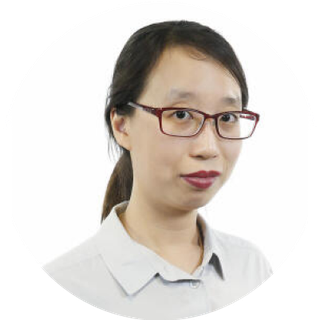Shiseido primps for expansion in South-east Asia
Its APAC chief sees huge opportunities in region's emerging middle class

Singapore
SOUTH-EAST Asian shoppers now make up some one-third of Japanese cosmetics and skincare group Shiseido's Asia-Pacific (APAC) net sales.
But that could go up to two-fifths in the next five to eight years, on the introduction of new brands, expansion of sales channels, and rising affluence in the populous Asean region.
That's the target from APAC chief executive Nicole Tan, who told The Business Times that she is asking her team "to be more daring, more ambitious".
Ms Tan, a beauty industry veteran who joined in October, has outsized goals for the region - even as the Shiseido group pursues another three-year business transformation plan.
"Pre-Covid, South-east Asia in terms of growth has steadily outpaced the Asia-Pacific," she said. Shiseido told BT that the pace of pre-pandemic growth in South-east Asia was twice that of the overall APAC rate.
A NEWSLETTER FOR YOU

Asean Business
Business insights centering on South-east Asia's fast-growing economies.
But with head office tapping prestige and skincare segments to underpin group growth, Ms Tan waved off the suggestion that the region is mainly mass-market territory.
"Although mass market is dominant. . . we also know that there is an emerging middle class," she said, calling South-east Asia "a growth driver and a growth engine" for Shiseido. "So there are also huge opportunities."
To be sure, Covid-19 has taken its toll on consumer retail. APAC net sales fell by 19.3 per cent year on year to 43.3 billion yen (S$554 million) in the nine months to Sept 30, with the full-year outlook for a 17 per cent sales decline in this region in 2020.
Yet, although group financial statements noted that Thailand was particularly hard hit by the pandemic, Ms Tan called it one of "our shining beacons" in South-east Asia, based on a substantial make-up market. Another regional star is Vietnam, where Shiseido highlighted that "sales for the first nine months significantly outperforming year on year".
"Our brands, our products, have resonated particularly well with that audience," Ms Tan added.
On how to build on a regional base and ramp up Asean growth, she described the strategy as "making our brands work harder for us in the market".
"It is about market share; it is about market share gains; it is about the introduction of brands, because we don't have a lot of our brands in some of these markets," she said, singling out Clé de Peau Beauté as a candidate for future market launches.
"It's not just market share gains in the channels that we are in today, it's also channel growth, as well as brand development, in these markets."
And with the digital frontier expected to be "an area of strong growth", Ms Tan cited both the use of "brand dot-coms" and tie-ups with e-commerce marketplaces - such as Shopee and Lazada - as avenues for growth.
That's as Shiseido has found that South-east Asian consumers have distinctive tastes: "For example, social commerce - that's huge, but that is really very proprietary to the Philippines, and maybe to a certain extent Vietnam, but really not so much in Korea or Taiwan or Oceania," Ms Tan said. "So it is really, then, how do we have that business dexterity. . . to answer to where the consumer is."
Other regional demands include the halal market, plus addressing weather-related skin concerns and "a preference for fresh, lighter textures".
Garnering such specific insights, which have led to new products such as a "lighter" micellar water cleanser, was a priority when Shiseido upgraded its regional hub in early 2019.
An innovation centre, which was tasked with carrying out consumer research to develop products for the region, numbered among the additions.
The point of the APAC base here is "to enable closer understanding of consumer needs. . . and also to improve our speed to market" rather than circling back to head office for market-specific needs, Ms Tan said.
She stressed that "it continues to be that way", despite the Tokyo-listed group's decision to boost China's competitiveness as a "second HQ".
"I've also told our regional headquarters team. . . that we should be driving regional initiatives from Singapore - not just as a centre for decision-making or for faster to market," Ms Tan added. She suggested that "some initiatives" could be crafted in Singapore and applied to the rest of APAC, but did not elaborate.
Granted, the pandemic has crimped initial goals for Singapore facility expansion, such as plans to raise headcount from 250 to 380. Shiseido APAC headquarters in Singapore now employs 340 staff.
But, from the tenor of her interview with BT, Ms Tan seemed confident about the year ahead. "I have to be," came her reply, when asked. "The markets are counting on that."
Upon joining the company, she soon asked her team to revise its FY2021 budget targets upwards.
"When we look at market trends and where we are - and, of course taking into consideration market recovery - it was not something that was unrealistic," she told BT, citing factors such as brand penetration levels.
"You know, at the end of the day, I really do believe it is a matter of holding hands and just tiding it through," Ms Tan added. "And if we can get through the first half, we'll be okay."
BT is now on Telegram!
For daily updates on weekdays and specially selected content for the weekend. Subscribe to t.me/BizTimes
Asean
Discussion on EU-Asean FTA has shifted towards cooperation in specific areas: DPM Heng
Thailand’s 500 billion baht handout aims to boost overall economy, not geared to poor: official
Indonesia’s central bank surprises with “pre-emptive” rate hike to cushion falling rupiah
Capital A chief Fernandes defers retirement, renews contract for five years
Thai central bank says holding key rate steady creates ‘policy optionality’
Vietnam holds first gold auction in 11 years to stabilise market

